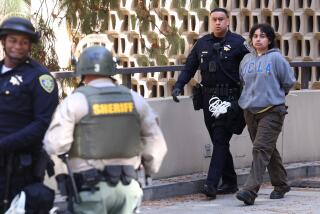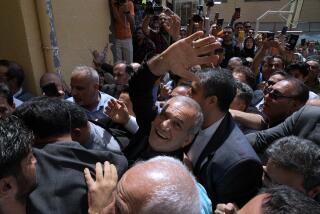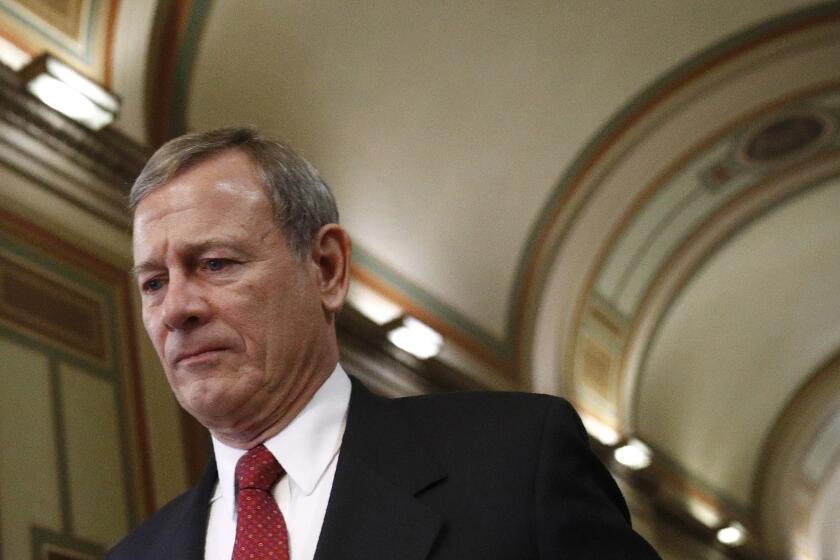Iran’s Turmoil Followed Live in L.A.
- Share via
It was a brutal overnight attack on sleeping university students in Tehran. Police and Islamic hard-liners clubbed the students, killing at least one and injuring many others, according to one human rights organization. Hours later, Iranian Americans in Los Angeles were reading a firsthand account.
“Hello from the Tehran Bloodshed,” began the e-mail sent by a student who said he was beaten in the July 9 raid on the Tehran University dormitory, which ended with 120 arrests.
The 600,000-strong Iranian community in Southern California is electrified by the student movement in Iran. And the international communications revolution--led by the Internet--is giving them a front-row seat to history that defies censorship.
Cellular phones have transmitted student protests live from downtown Tehran to Iranian radio shows in Los Angeles. Censored journalists and protest leaders speak directly from Iran to Iranian American radio audiences. And many Iranian students and intellectuals are in constant e-mail contact with Iranian Americans in this country like Cal State Northridge professor Nayereh Tohidi.
“It’s not like 30 years ago when you could keep people behind iron walls,” Tohidi said. “The expansion of the means of communications has made it impossible for them to really censor people and stop them from communicating with one another. The international democratic discourse has infiltrated Iran.”
And the students’ embattled push for broader freedoms in Iran has infiltrated “Irangeles”--the capital of the largest community of Iranians outside Iran.
On July 15, thousands of Iranian Americans demonstrated in front of the Federal Building in Westwood in support of the Iranian protesters. From West Los Angeles businesses to homes in Beverly Hills and Bel-Air, Iranian Americans are talking about the protests in Iran “all the time,” said Dariush Fakheri, the publisher of a magazine, Chashm Andaaz, and president of the International Judea Foundation’s California chapter.
“This is an extremely critical moment for the Iranian people,” said S.M. Rezaian, a Beverly Hills physician who taught at Tehran University’s medical school until he was forced to flee a fundamentalist crackdown in 1983. “These students just want fresh air, the freedom to dress and say what they wish--and they are my nephews and cousins.”
Such ties gave Rezaian, who is a Muslim, an open window on the protests in Iran, which erupted after the shutdown of a reformist newspaper July 7. The protests began peacefully and ended with violent clashes that students say were provoked by conservative agents. They were halted six days later after 1,200 people were arrested, but students continue to press for reforms.
“People are trying to contact everyone they know in Iran,” said Nanaz Pirnia, a Westside family therapist. “There is a lot of worry. We’re watching the news very carefully. We are all praying and hoping that something good will come out of this movement.”
Some, like Parivashi Saadati of Laguna Niguel, have reluctantly stopped calling relatives in Iran because they fear calls from the United States will cause them to be suspected of spying.
Fears that conservatives are monitoring telephone calls are pushing e-mail to the forefront in Iran, where Internet use is fairly recent but rapidly growing and wildly popular.
Tohidi said Iranians fear their Internet communications will be intercepted, so some alternate their e-mail addresses. To get around a national ban on satellite dishes, Iranians keep them covered most of the time but secretly use them to tune in to TV news.
The global traffic underscores the way the Internet is becoming a medium for political movements worldwide. In much the same way as U.S. political parties use the Internet for fund-raising and Chilean human rights groups use it to press for prosecution of human rights abuses, Iranian Americans use Internet Web sites to post the latest news from Iran.
The e-mail links underscore the high-tech proclivities of Iranian Americans, who are one of the most educated and successful U.S. immigrant groups.
And in Iran, the Internet revolution means authorities “cannot stop the opposition abroad from communicating with Iran,” Tohidi said. “They cannot stop women in Iran from learning about women’s movements outside of Iran. They cannot stop the youth from learning about world youth culture.”
In a highly literate country where 65% of the population is under 25, such access to cosmopolitan currents means religious leaders “cannot control the youth. Youth culture is one of the main dangers of this regime,” she said.
The students in Iran are demanding reforms--such as the transfer of the military and other key institutions from religious to civil control--that would make Iran less of a theocracy and more of a republic. The largely conservative leaders of Iran’s Revolutionary Guard has threatened that further unrest might prompt them to intervene--a warning viewed as a challenge to reformist President Mohammad Khatami. But in a speech Tuesday, Khatami pledged to continue the reforms.
If the upheaval in Iran has brought Southern California Iranians together, it has also underscored their differences.
Most of the organizers of the Westwood demonstration are constitutional monarchists, and many of them were supporters of the shah ousted in Iran’s 1979 revolution, said Jimmy Sedghi, the president of the Iranian American Political Action Committee.
“The majority of demonstrations here are done by monarchists,” Sedghi, a onetime assistant to the shah.
Iranian Americans who favor a U.S.-style democratic republic say the monarchist presence makes them reluctant to be involved in the Los Angeles protests.
For David Nahai, a founder of the Iranian American Republican Council, the tumult in Iran “just reinforces to me how precious are the freedoms that we enjoy here.” The one he most cherishes, he said, is the U.S. separation of church and state. When he hears of U.S. religious groups seeking to blur the distinction, “I would like to tell people, if you want to see what a marriage of state and church looks like, there are many examples in the world, and none of them are attractive.”
More to Read
Sign up for Essential California
The most important California stories and recommendations in your inbox every morning.
You may occasionally receive promotional content from the Los Angeles Times.










